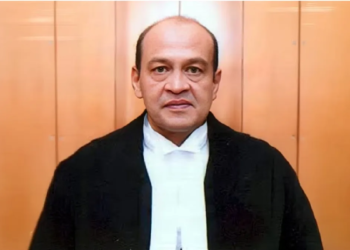The Aam Aadmi Party-led government, which is in power in the national capital Delhi, has been in the headlines this year during its decade-long rule due to various reasons including the arrest of former Chief Minister Arvind Kejriwal, change of government and resignation of two ministers. Involves a confrontation with the Lieutenant Governor.
On a positive note, the government presented its biggest annual budget of Rs 76,000 crore for 2024-25 and took several welfare initiatives including monthly honorarium scheme for women, introduction of electric buses, as well as clean air days in the city. The increase in numbers was also a remarkable achievement for him.
The year began with a standoff between Kejriwal and the Enforcement Directorate, which issued several summons to question him in an alleged money laundering case related to excise policy. Kejriwal repeatedly refused to comply with his summons. The agency finally arrested him on March 21.
As early as January, while evading Enforcement Directorate (ED) notice, Kejriwal had expressed concern that the BJP-led central government might arrest him to prevent him from campaigning for AAP in this year’s Lok Sabha elections. Is.
Despite his arrest and imprisonment, Kejriwal insisted that he would continue to run the government from jail, and issue instructions to his ministers related to water supply, sewage, hospitals and other matters.
Lieutenant Governor VK Saxena argued that the Delhi government would not be allowed to run from jail. After this, another period of tension started with the ruling system.
Meanwhile, Atishi, who has emerged as the most powerful member of the Delhi Cabinet, expressed fear of imposition of President’s rule, calling it a clear case of “political vendetta”.
Kejriwal faced another challenge as chief minister when the Crime Branch of Delhi Police issued a notice to him over his claim that the BJP was trying to bring AAP MLAs into its fold to topple his government. Is.
The notice was served to him after a five-hour standoff at his official residence on February 3.
Throughout the year, there was much discussion about the ongoing tussle between the AAP-led Delhi government and the Lieutenant Governor’s office on various issues.
In January, Saxena had recommended a CBI probe into alleged fake lab tests and fake patients in mohalla clinics, sparking a war of words with Health Minister Saurabh Bhardwaj.
The standoff between the ruling government and the Lieutenant Governor’s office began on February 24 when the Lieutenant Governor urged Kejriwal to expedite the stalled process of presenting the budget. The issue got further prolonged due to the budget session of the Assembly being extended beyond the scheduled time.
Saxena regularly writes letters to the AAP government asking the Chief Minister to present the pending CAG report in the Assembly. However, this constitutional requirement has not been fulfilled yet.
Atishi, who holds the charge of the power department, accused the Lieutenant Governor of trying to obstruct the government’s solar policy ahead of the Lok Sabha elections in Delhi in May.
Another confrontation erupted in August when then jailed Chief Minister Kejriwal insisted that Atishi hoist the flag at the state’s Independence Day celebrations. However, the Lieutenant Governor ensured that the then Home Minister Kailash Gehlot hoisted the flag at the ceremony.
After Kejriwal’s arrest, the government again suffered a setback with the resignation of the then Social Welfare Minister Raj Kumar Anand. In November, Gehlot also resigned from his ministerial post and left the Aam Aadmi Party and joined the BJP.
There was a heated exchange between Saxena and Kejriwal over the water bill waiver scheme proposed by the Delhi government, in which both wrote ‘open letters’ attacking each other.
The AAP government also clashed with the Lieutenant Governor over the removal of marshals from public transport buses.
The work of the Delhi government, which had come to a standstill due to Kejriwal’s arrest, started coming back on track after his release from jail in September and resignation from the post of Chief Minister. Atishi then assumed the role of Chief Minister and formed his cabinet, which took oath on 21 September.
Despite all the challenges, the Delhi government managed to achieve several achievements, including presenting an annual budget of Rs 76,000 crore in the Assembly in March.
The government also announced ‘Mukhyamantri Mahila Samman Yojana’ to provide a monthly honorarium of Rs 1,000 to all eligible women of Delhi and set aside Rs 2,000 crore to implement the scheme. However, it was delayed due to Kejriwal’s arrest.
The AAP government has also significantly improved public transport services in the capital. The number of buses in the city has increased to 7,200, including 1,300 electric buses, with an average of 41 lakh passengers traveling in buses per day in 2023-24.
To further strengthen the transport infrastructure, 350 e-buses were flagged off in February, taking the number of such buses to 1,650.
In the education sector, one of the top priorities of the government, initiatives like ‘Shiksha Par Baat’ to collect feedback from students and parents and ‘Abhishik’ project to identify and nurture talented students were launched.









